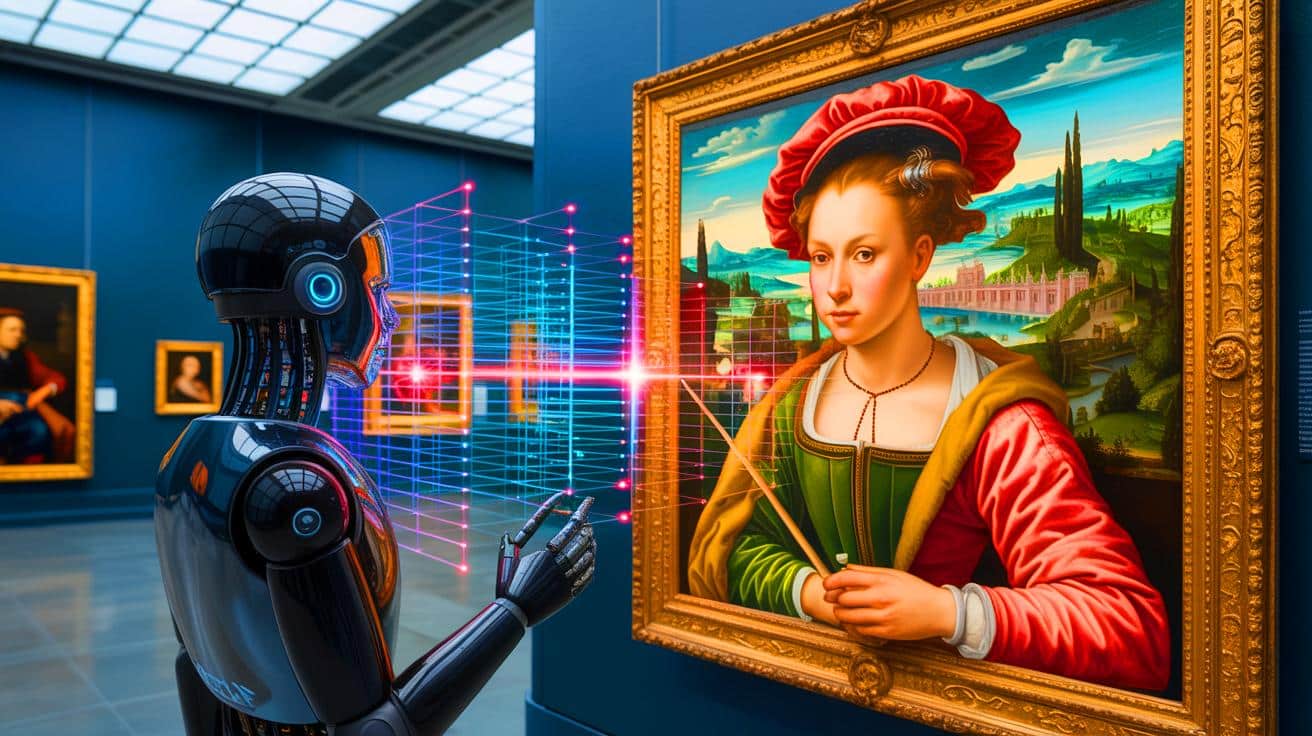IN A NUTSHELL
🖼️ AI analysis reveals St Joseph’s face in Raphael’s painting may not be his work.
🔍 Researchers used custom AI algorithms to identify Raphael’s distinctive style.
🧑🎨 Speculation suggests Giulio Romano, a pupil of Raphael, may have contributed to the artwork.
🤖 AI considered a complementary tool for art experts, not a replacement.
In the art world, the authenticity of masterpieces has always been a subject of intense scrutiny and debate. Recently, the advent of cutting-edge technologies like artificial intelligence (AI) has offered new tools to art historians and critics. A recent study has spotlighted how AI can discern details in paintings that are often missed by the human eye. In a landmark discovery, researchers have used AI to analyze a famous painting by Raphael, the Madonna della Rosa, revealing that at least one face in the composition may not have been painted by the master himself. This revelation raises questions about the painting’s provenance and the broader implications of AI in art authentication.
The AI Revelation: St Joseph’s Face in Question
In 2023, an AI neural network was trained to examine the intricate details of the Madonna della Rosa, a renowned painting attributed to the Italian master Raphael. The AI’s analysis focused on the faces within the painting, particularly that of St Joseph, located in the top left corner. This analysis revealed that St Joseph’s face might not have been crafted by Raphael’s hand.
For years, art scholars have debated the authenticity of the painting, questioning whether Raphael alone was responsible for its creation. The AI’s findings align with those who have long suspected that another artist contributed to the piece. This revelation stands as a testament to AI’s ability to see beyond the limitations of the human eye, delving into microscopic details of brushwork and color palettes to make such determinations.
The researchers, using a sophisticated AI algorithm, trained their model on authenticated works of Raphael, allowing the AI to recognize his distinctive style. This method, which combines deep feature analysis with machine learning, provides a new lens through which art can be understood and authenticated.
Technological Tools: The AI Behind the Discovery
The technology employed in this analysis is not your average image recognition software. Researchers from the UK and the US developed a custom algorithm based on Microsoft’s ResNet50 architecture, enhanced with Support Vector Machine techniques. This model was trained on known works by Raphael, allowing it to achieve a remarkable 98 percent accuracy in identifying his paintings.
Traditionally, such AI models are trained on entire images. However, in this study, the researchers pushed the boundaries by analyzing individual faces within the paintings. The results were revealing. While the Madonna, the Child, and St John were confirmed as Raphael’s work, St Joseph’s face did not match the style of the master, suggesting the hand of another artist.
This analysis underscores the potential of AI to aid in art authentication, providing a new dimension of analysis that complements traditional methods. By examining details at a microscopic level, AI can uncover insights that have eluded human experts for centuries.
Historical Context and Artistic Implications
The Madonna della Rosa, believed to have been painted between 1518 and 1520, has been the subject of speculation since the 1800s. Critics have long suspected that Raphael might not have been the sole artist involved, and the AI findings lend credence to these suspicions.
One theory suggests that Giulio Romano, a pupil of Raphael, may have contributed to the painting, particularly in the rendering of St Joseph’s face. However, this remains speculative, highlighting the complex nature of art attribution. While AI has provided new evidence, it also opens the door to further questions about artistic collaboration during the Renaissance period.
This discovery is an example of how modern technology can illuminate the past, challenging long-held assumptions and enriching our understanding of art history. As AI continues to evolve, its role in the art world is likely to grow, offering new opportunities to explore and understand historical artworks.
The Future of AI in Art Authentication
While AI has proven to be a powerful tool in the analysis of artistic works, experts caution against seeing it as a replacement for human expertise. The process of authenticating art involves a comprehensive examination of various factors, including provenance, materials, and condition. AI should be viewed as a complementary tool that can enhance the traditional methods used by art historians and scientists.
According to the research team behind the study, AI’s role is to assist, not replace, the experts. By integrating AI analysis with traditional practices, art historians can gain a deeper understanding of artworks, potentially unveiling new insights into their creation and history.
As AI technology continues to advance, its applications in art and other fields will likely expand. This raises important questions about the balance between technology and human expertise in the art world. How will AI reshape our understanding of art, and what new discoveries lie on the horizon?
The implications of AI in art authentication are profound, offering a glimpse into a future where technology and art intersect in unprecedented ways. As we continue to explore these possibilities, we must consider a key question: How will the integration of AI and traditional expertise change the landscape of art history and appreciation?
This article is based on verified sources and supported by editorial technologies.
Did you like it? 4.5/5 (22)

